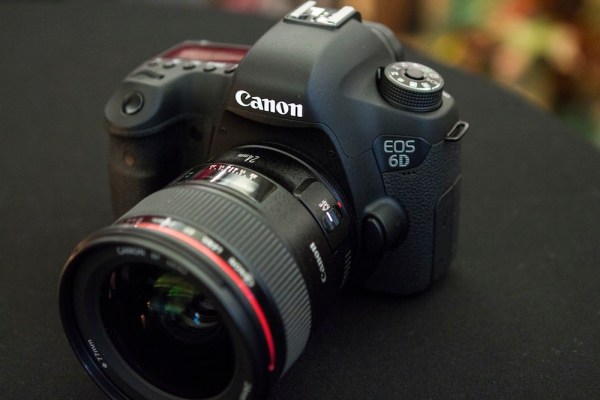There’s mounting evidence that the tendency to favour smartphones over standalone cameras isn’t just tanking compact camera sales – it’s affecting DSLR and interchangeable lens cameras, too. A new WSJ report claims that DSLR camera shipments could fall 9.1 percent by the end of 2013, versus 2012, according to research firm IDC. It’s a sign that going retro might not be the only thing required to save standalone cameras from going extinct.
Canon and Nikon, the two leading DSLR camera makers, both lowered their forecasts for the fiscal year in the past month, the WSJ notes, which means that the market is likely hurting as a whole. While those companies see this as a temporary setback due to global economic conditions, it looks a lot like what’s been happening to the PC market over the past few years – another phenomenon initially blamed on economic weakness, but more likely tied to the rise of smartphones and tablets as alternate computing platforms.
Smartphones likely are probably a culprit when it comes to the declining fortunes of the DSLR market. Image quality from mobile devices is on the rise, and the convenience of those devices is a very compelling argument for consumers who might otherwise buy a standalone camera as hobbyists or for use while traveling. And image quality/convenience isn’t the only factor here: there’s also the fact that far fewer people are printing photos than would’ve done in the past, preferring instead to trust their images to digital album services like those offered by Apple and Google.
While DSLR makers have been building features into their devices that approximate those employed by smartphones, including Wi-Fi radios, geotagging and social sharing, I’d argue they haven’t gone far enough. The reason DSLRs are attractive to their existing audience is that they’re tricky, to some extent, so it makes sense to want to keep the manual controls and exhaustive menus in place. But the reason more and more users are satisfied with their smartphones is that they’re increasingly making it easy to take great photos with a minimum of user input.
DSLRs could have a considerable advantage in this regard. They already have far better sensors capable of taking far better images than any smartphone. What they need now are the smartphone smarts: build in an algorithm for automatically creating the best photo out of five exposures, for instance, like Google has done with the Nexus 5. In fact, Google has all kinds of lessons camera makers should take to heart, with its automatic photo editing features in Google+, which I’ve found time and again make exactly the kind of minor tweaks I’m likely to do myself in Lightroom or Aperture.
Likewise, Apple is making its iPhone 5s camera more intelligent, with behind-the-scenes features that make you feel like a pro even if you’re a rank amateur. This is where DSLR makers should be focusing their efforts. They might believe that building front-facing consumer features, like filters, face detection, sharing and other things is what’s going to net them an even playing field with the smartphone set, but the real winning advantage would be in an end product that consistently amazes. Gadget development over the past 10 years has been all about spoiling consumers: These days, if something doesn’t work exactly as expected 9 out of 10 times, most users will put it down and never pick it up again.
Each exposure used to be precious, back in the days of film, when you had a limited amount and couldn’t check to see if you’d got a good shot until you were back in the darkroom. Then, exposures were cheap, made so because you have a virtually unlimited amount with digital storage. Now, I’d argue they’re precious again, because users want to be instantly rewarded with a great experience on the first try. Nailing every exposure, regardless of an operator’s level of skill, needs to be the goal of camera makers hoping to give consumers a reason to buy expensive, often cumbersome hardware, even if that’s something that strikes the hardcore hobbyists as counterintuitive.
There’s still room for dial-laden, finicky beasts that are time-consuming and rewarding to master, but to return to positive growth, Canon, Nikon and the rest need to cast a wider net with features everyday users have come to expect.
